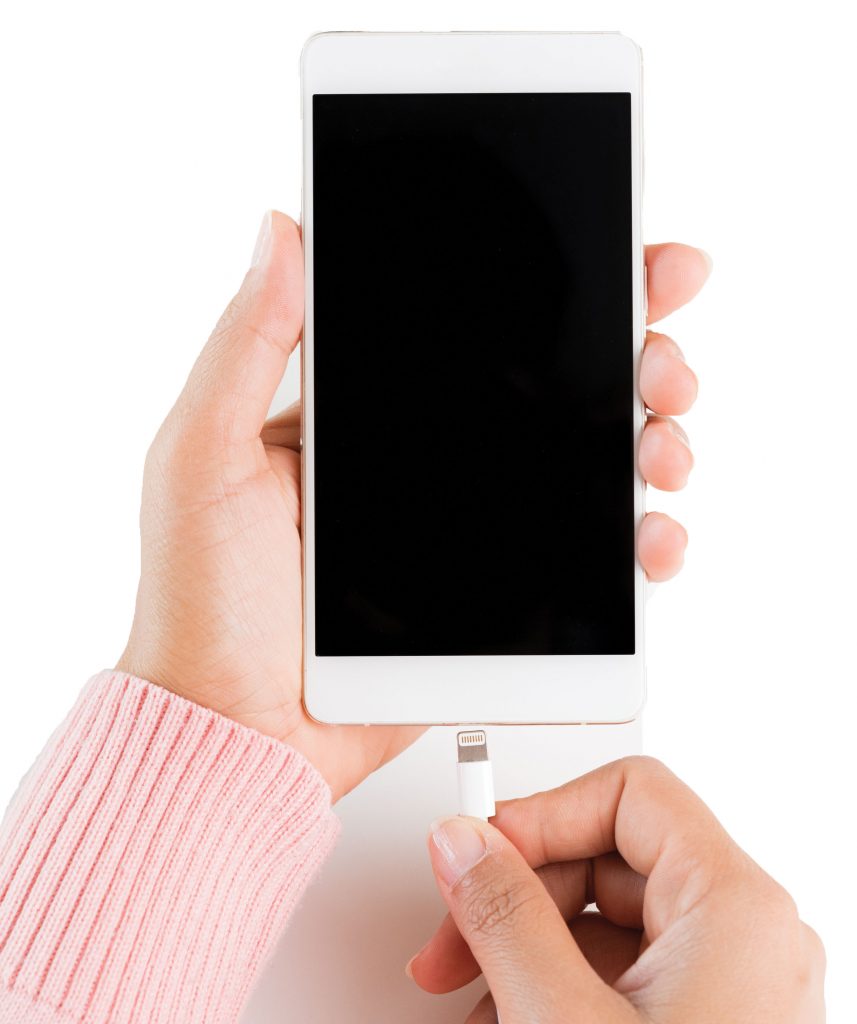
Charging a cell phone is something we all do every day. No big deal, right? Wrong.
Take these familiar scenarios, for example:
- You need a new charger. So, you head to the nearest gas station and grab one at a discounted price.
- You typically charge your phone in the bathroom — using an unwieldy 10-foot cord.
- You like keeping your phone close, so you plug it in next to your bed and tuck it under your pillow.
- You’ve run out of outlets, so your phone charger has taken permanent residence plugged into an extension cord.
All pose dangers. Here’s why:
Quality cords
Whether you need a replacement or just want an extra phone charger, it can be tempting to purchase the low-priced option rather than the higher-priced charger from the manufacturer. However, purchasing a bargain charger could have disastrous consequences.
Most of the time, these products are unregulated and untested. Their components are often low quality and are not backed by a manufacturer’s warranty. Only purchase charging devices and electronics from trusted sources and be sure they have been tested or marked by a nationally recognized testing laboratory like Underwriters Laboratories.
It’s also important to inspect your charging cords for damage. Any cord that carries electrical power becomes a fire hazard when it’s damaged and wires are exposed. As soon as you see damage to a cord, stop using it.
Right location
It’s safest to charge your devices on cool, well-ventilated surfaces away from flammable objects. A well-ventilated spot will help prevent your device from overheating. Devices tucked under a pillow, nestled on the carpet or resting on a bed or couch don’t allow for this.
And, always unplug charging cords when they’re not in use. Cords that are plugged in are constantly drawing power. If the cord isn’t plugged into a device that power can be transferred to flammable objects, such as fabric, carpet or wood, and cause it to ignite.
Water hazard
Once your phone is plugged into an outlet it becomes a potential electrical hazard. And, unlike a hair dryer or electric razor — devices meant to be used in a bathroom — phones, laptops and wireless speakers are not equipped with a safety mechanism known as a ground-fault circuit interrupter (GFCI), which shuts off power to the device when it gets wet.
In the U.S., building codes require you to use outlets equipped with a GFCI in bathrooms, kitchens and other household spaces where an electronic device might come into contact with water. Regardless of the type of cord you’re using, if you drop your phone into water you could be electrocuted.
Don’t make your electronic devices even more complicated than they already are. Always stay plugged into safety when using a device’s charging cord!



